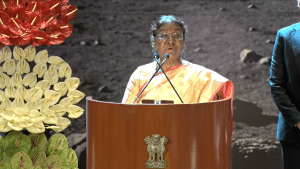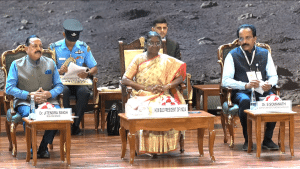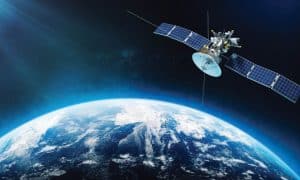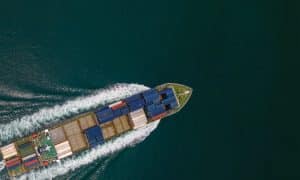According to a recent story in the Times, satellite operators are ‘facing new challenges’, namely the proliferation of satellites in low-Earth orbit. According to the author, there are ‘almost 10,000’ spacecraft encircling the globe at an altitude of around 2,000 kilometres at the most.
The risks of collisions are, the author adds, ‘growing’, and collisions are even more serious because a ‘single smash-up can launch thousands of bits of debris that can stay floating for centuries and possibly longer, presenting a huge threat to other spacecraft.’ Should we be concerned?
In short: No!
Although ‘10,000’ sounds like an enormous number of satellites, low-Earth orbit is vast, which makes the likelihood that two of them will crash unlikely. The Earth’s circumference is approximately 40,075 kilometres, and LEO wraps around this immense circumference at altitudes ranging from 160 to 2,000 kilometres. Even within a specific altitude range in LEO, the volume of space is therefore extremely big. There’s always such a significant amount of space between objects. And it’s for this reason that we don’t need to worry too much.
That doesn’t mean we shouldn’t worry at all, though. Last year, there were 20,000 avoidance manoeuvres made by Starlink satellites at risk of crashing. And as the sector grows, the number of satellites in orbit will increase. They don’t park, like cars, or land, like planes: they stay where they are, orbiting around the Earth at a speed of more than 7 km/sec. So the problem is exaggerated but non-trivial.
The Times journalist is right to say the risk of collisions is ‘growing’, but with a proper understanding of the context, we can see that this doesn’t mean that they’re likely.
Given this, why are there concerns about space collisions? As is so often the case, it’s because there are people who benefit from that perception. There are companies that develop the technology to deal with space debris. If there are widespread fears that space debris is everywhere, and that collisions between satellites are imminent, they stand to make money.
This is the real problem: that there are those inflating the risk of satellites colliding, and obscuring the true picture. What we need is an appropriate appraisal of the risk so space sector actors can make the right decisions. Specifically, those actors need to understand that there’s no need to be overly concerned with satellite collisions, so long as we put in place sensible measures to manage the Earth’s orbit, which are already starting to do.
First, there’s space traffic management. This would ensure the safe and efficient movement of satellites through orbit. It exists for aeroplanes; and, in fact, air traffic management makes a useful case study. Through a combination of ground and airborne functions, thousands of aeroplanes carrying millions of people fly around the world without coming close to each other. Millions of people board planes every day, safe in the knowledge that they’ll reach their destination safely.
Already, advanced tracking systems, such as the United States Space Surveillance Network, are monitoring tens of thousands of objects in space and providing satellite operators with early warnings of potential collisions so that they can take evasive action. We need to develop this into a sophisticated space traffic management system, involving institutional and commercial actors alike.
Second, there’s debris detection. Debris can be highly dangerous, especially so because of what’s called the Kessler effect. This describes how any satellite collision could send thousands of pieces of debris flying through orbit and trigger a cascade, whereby debris collides with other debris, creating more debris, which then collides with other debris and so on. This would put satellites at grave risk, and it’s why the detection of debris is an important plank of any strategy designed to keep satellites in orbit, doing their job.
The third plank follows: debris clean-up. As I mentioned before, there are debris removal companies that can do this. We need clear regulations defined and put in place to ensure that anything added to orbit is identified straight away and dealt with promptly. And we must also clean up what is already there.
This is about the sensible administration of all the levels of Earth’s orbit – especially LEO, which is set to be the most densely populated level – on an ongoing basis. The United Nations Office for Outer Space Affairs (UNOOSA) is making progress in this area.
These guardrails are important because space-enabled technology is now so central to modern life that more satellites are going to be launched. We should celebrate that. Satellites have a major part to play in solving some of our biggest problems, from sluggish productivity to the climate crisis.
The latter is worth discussing here. The climate crisis represents a huge and very present risk to everything we hold dear about life on Earth – a risk orders of magnitude greater than satellites colliding.
Space-enabled technology is one of the primary ways that we’re tackling that crisis. Optical payload solutions – advanced cameras fitted to satellites – are able to take pictures of the planet with rising accuracy and at an increasing level of detail. The terabytes of raw imagery captured by these satellites can then be processed and analysed by Earth observation technology companies and passed on to national governments supranational bodies like the UN.
There are countless other ways in which satellites are essential. They enable precision farming, which involves optimising yields, irrigation, pest control, soil management, disaster avoidance and the transportation of crops. This not only helps us to tackle massive food insecurity – which has risen for three years in a row (733 million people faced hunger in 2023) – while reducing the environmental harm that agriculture, which employs 40 percent of the planet, does.
Satellites are also behind 5G, autonomous vehicles and advanced logistics, massively reducing waste while increasing efficiency, downstream from which is growth. They enable reliable communication over vast distances and bring connectivity even to remote locations, empowering local communities who might otherwise not have access to educational tools or telemedicine.
Satellites aren’t strange grey objects floating around in the heavens, always at risk of crashing. They’re the backbone of the world economy. They just need to be managed.
No one objects to traffic lights, traffic signs or road traffic rules. Equally, we don’t overstate the risk of cars crashing. We need to think about satellites the same way.
The sensible management of satellites will allow the sector to accelerate its growth. Already vast, it’s now at an inflection point, ready to take off, and savvy investors are moving on from the more conservative years of the Covid-19 pandemic and looking to back the next great space inventor or growth-stage space tech company on the verge of bringing its products to the masses.
There’s no need to panic about satellite collisions. Let’s just be prudent and innovative. Let’s put the right regulations in place to keep satellites in orbit, operating as usual, and discarding them safely and in a controlled way. That way, they can keep making life better on Earth.
Disclaimer: Views Expressed are Author's Own. Geospatial World May or May Not Endorse it









